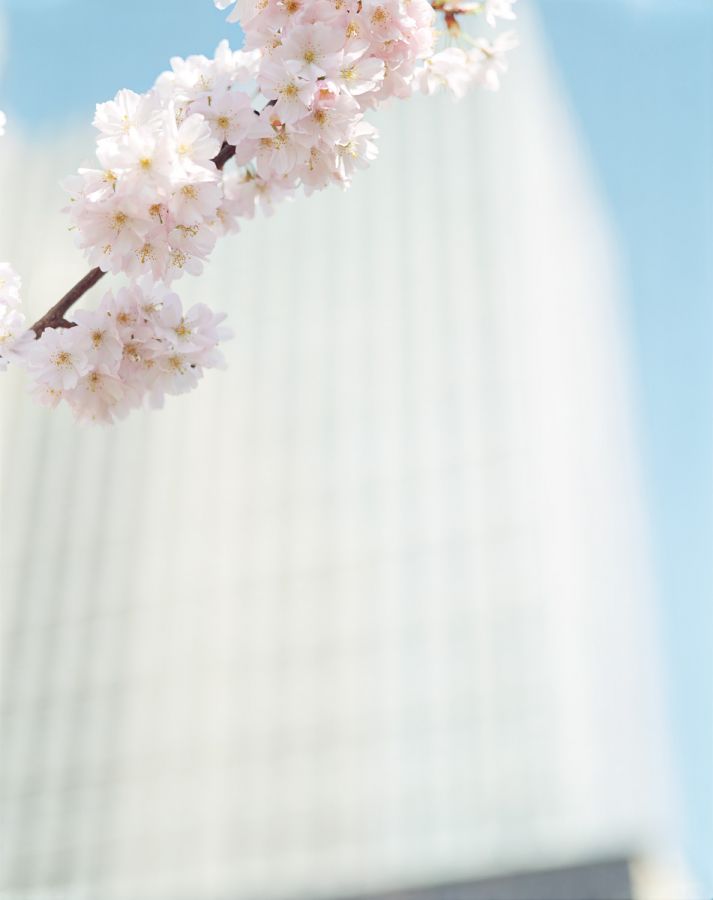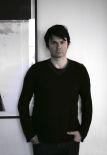In Homelux, high-rise blocks - concrete carcasses with light running
through them – are no longer awe-inspiring structures; shot at night,
from a vantage point inaccessible to passers-by, they take on a form of
weightlessness one would never have suspected. Could you tell us more
about how you went about shooting them?
Architecture conditions the way we see our environment. Viewing it from
low down on the ground or from the top of a high-rise is not merely a
change of perspective on the ordinary: it theatricalizes and transforms.
I needed to find a resident in one of the buildings nearby who would
let me use a window in his apartment, or give me access to the roof. As I
did the shooting at night, in areas that were sometimes quite dodgy, it
took some time to obtain the necessary authorizations. From a high
vantage point, tower blocks no longer seem overwhelming or impersonal:
their social context is revealed, their interiors appear, life surges
from the inanimate mass.
In Le Printemps, again, the perspective is reversed. What is usually
seen as a mostly secondary decor comes to the fore. How did you
correlate the plant world and architecture?
The starting point for me has always been architecture. I’m interested
in buildings that develop visual potential once they have been thrown
into the blur of photography. Nature is never far away - “green spaces”
are an invention typical of this kind of architecture, their purpose is
to make life bearable or, at least, possible, making the two
inseparable. I actually discussed this with a botanist who told me that
certain plant species featured alongside buildings I had photographed
were in fact created around the same time as the buildings themselves.
It’s often difficult to take a fresh look at things you can hardly
see anymore. You have chosen to photograph Paris, your home city, a
subject you are familiar with – is this a stimulating factor for you as a
photographer? How do you roam the streets of Paris?
Unlike photojournalists, I never seek to shoot the “hot topic”, the most
powerful, evident image out there that needs to be treated.
Quite the opposite, I’m interested in transparent things; my work
revolves around the idea of defamiliarization, or paying attention to
what has become obscured by habit.
Many say that Paris is an un-photographable city because it’s been
photographed too much already; this poses the problem of the subject, of
its interest, of the documentary power photography cannot avoid.
I was invited to shoot the spring in Tokyo and New York, but that
wouldn’t bring anything to my idea of transformation – it might be
entertaining, but that’s not what my work is about. If I were to take an
interest in these cities, it would be for historical, political or
social reasons.
When scouting, I look for the specific arrangements of architectural
types and urban organizations prevalent in every Western city. This is
both precise enough and sufficiently undefined to leave room for
surprise, the sudden shocks that can never be planned in advance and are
the subject of my research.
Limited edition, numbered and signed.

 Christophe Maout lives and works in Paris. In recent years, in addition to his editorial work for the press (Libération, Le Monde, Télérama), the photographer has been developing a body of work focusing on the city. Homelux (2006) explored peripheral urban areas to create a new vision of what we perceive - or no longer do – in the “monuments” constituted by high-rise buildings along the Paris ring-road. High-rise estates also feature in his series Le Printemps (2005), in which he takes an unusual viewpoint: the vegetal presence around them, from flower beds to cherry tree branches. In his series Totems (2009) - a collection of electric poles turned vegetal pillars, with almost anthropomorphic shapes - he further pursued his quest for “re-poeticized” urban spaces.
Christophe Maout lives and works in Paris. In recent years, in addition to his editorial work for the press (Libération, Le Monde, Télérama), the photographer has been developing a body of work focusing on the city. Homelux (2006) explored peripheral urban areas to create a new vision of what we perceive - or no longer do – in the “monuments” constituted by high-rise buildings along the Paris ring-road. High-rise estates also feature in his series Le Printemps (2005), in which he takes an unusual viewpoint: the vegetal presence around them, from flower beds to cherry tree branches. In his series Totems (2009) - a collection of electric poles turned vegetal pillars, with almost anthropomorphic shapes - he further pursued his quest for “re-poeticized” urban spaces. 